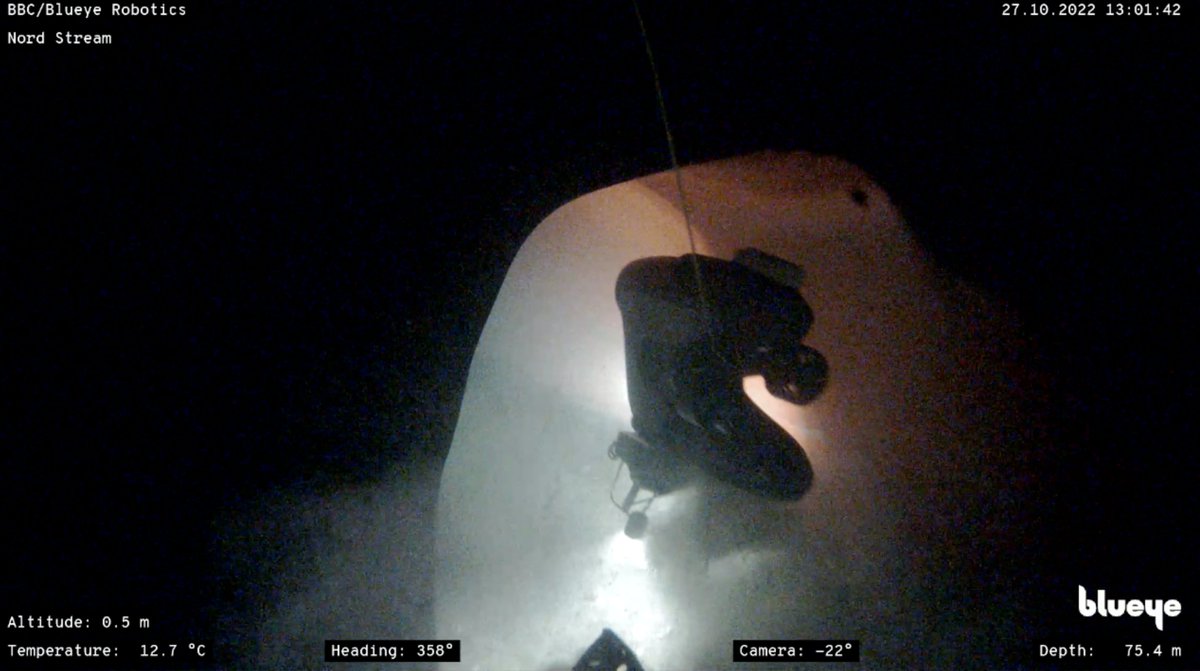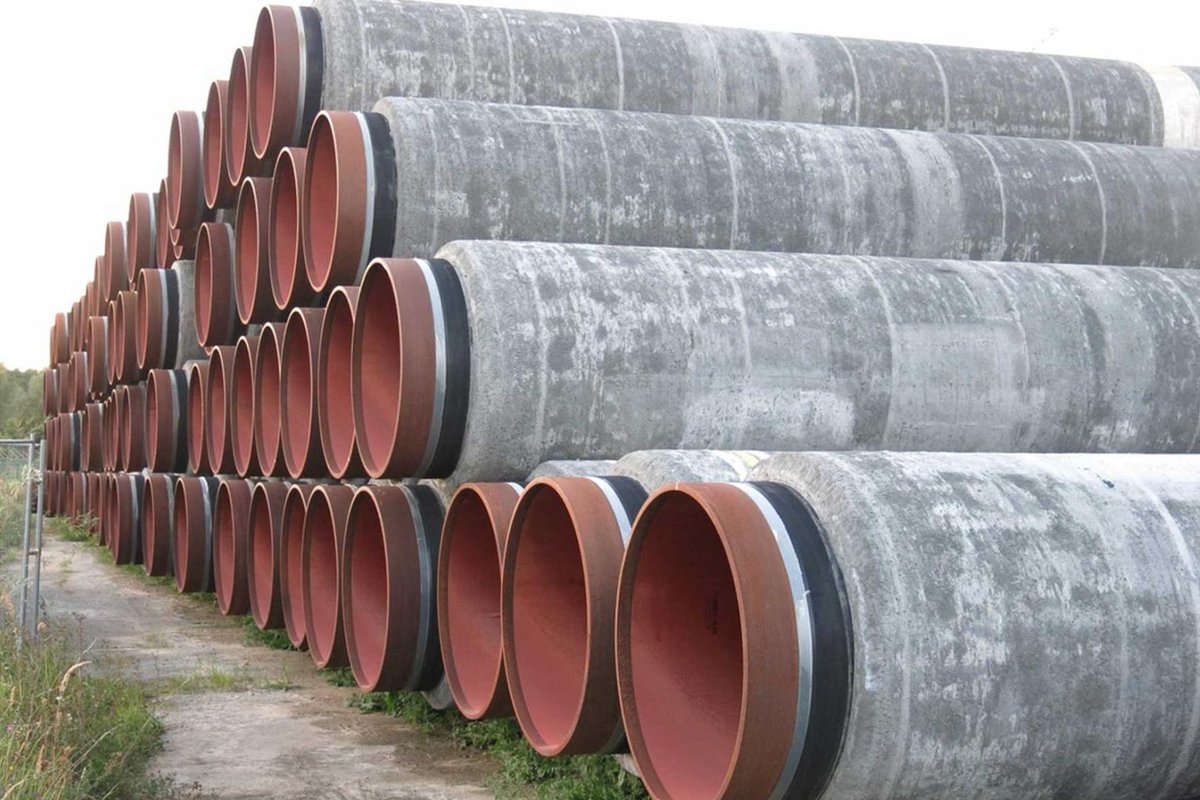
A thread with some more details on what we saw with @BBCkatyaadler & @jadominguez_a when we filmed the site of the Nord Stream explosions with the help of an underwater drone, including some unpublished pics & videos plus bits from the sonar. (1/17)
#nordstream #osint
#nordstream #osint

Our main finding is that large sections of the pipeline have been blown off and moved great distances away from their original position. Our sonar data verifies the information published by the Nord Stream 1 consortium, that debris is spread over a large area. (2/17)
While we could find some small debris in the area, it was either in the scale of max a few kg, or very large. We saw no medium size debris.
Obvs we were there after the Swedish and German investigations. But we did pick up this piece of metal. (3/17)
Obvs we were there after the Swedish and German investigations. But we did pick up this piece of metal. (3/17)

We believe it's a part of this metal used to seal the area of welding betweetn the pipe sectors.
See this video by Nord Stream (4/17)
See this video by Nord Stream (4/17)

A note on terminology to avoid confusions: the Nord Stream pipeline is composed by two pipelines and each of them is made of sectors of pipes. Each line consists of approximately 100,000 concrete weight coated steel pipes, welded before laid on the seabed. (5/17) 

Each sector is 12m long and weights 24 tonnes. It's important to keep these two figures in mind when trying to understand what happened after the explosions. These sectors are 10-15cm thinkg - 4.1 of it is steel and another 6-11 cm is reinforced concrete. (6/17) 

We spent several hours over one of the locations of the explosions, inside the Swedish EEZ. We managed to film mainly on two points, a V-shaped segment of the pipeline and another sector which was standing vertically on the seabed. Here's a bit of the undamaged part. (7/17)
At one of the two ends of the V-shaped segment we sent one of the drones inside the pipe and used the second one to film from outside (and help shed more light too as it was pretty dark at the depth of 70-80m). 8/17
According to the sonar measurement, the V-shape pipe is approx 48m long. This makes us believe it's composed by four 12m sectors of pipe which were detached at the point of welding. This 96 tonnes part lies at least 150 meters from its original position. (9/17) 

Now we don't know if this was moved by the blast itself or by the immense pressure of the gas that was flowing out of the pipe for days. But it's still impressive how such a heavy piece travelled that much underwater.
(10/17)
(10/17)
Another impressive element is a sector (or something like half of it) lying vertically on the seabed. We measured this 5 m which is less than the standard 12m. Couldn't tell with certainty if it was broken or whether a part of the sector was hidden under the seabed.
(11/17)
(11/17)
Still, very weird that this landed & stabilized vertically at a distance of at least 200m from its original position. Notably, this sector is very damaged - look at the reinforced concrete casing. A clue this piece could have been near the blast?
(12/17)
(12/17)
One final finding. We noticed some tracks inside one of the sectors. The black marking on the red internal coating looks like wheel tracks but as far as I know pipeline Pigs travel with pressure & not with wheels. Any #osint or pipeline expert out there who could explain?
(13/17)
(13/17)
Trond Larsen, the underwater drone expert of @BlueyeRobotics , who was with us kindly created a map stitching all the bits and pieces of the sonar recording. So, this is a map of the area we visited:
(14/17)
(14/17)

And here's the map with a bit of explanation. The impact point is thought to be to the left of the area we examined. (15/17) 

I'm putting this in the public sphere in the hope some people might assist us in having a better understanding of what exactly happened there. Will stop this thread here with the picture of a 6m long whale who passed under our sonar and said Hi.🐳
(16/17)
(16/17)

Once more (promise it's the last time), I'll tag some of the accounts I follow in case of interest:
@The_Lookout_N
@vcdgf555
@konrad_muzyka
@CovertShores
@WarOnTheRocks
@akihheikkinen
@Osinttechnical
@OAlexanderDK
@Northern_Sentry
@BenDoBrown
@IntelCrab @CalibreObscura
17/17
@The_Lookout_N
@vcdgf555
@konrad_muzyka
@CovertShores
@WarOnTheRocks
@akihheikkinen
@Osinttechnical
@OAlexanderDK
@Northern_Sentry
@BenDoBrown
@IntelCrab @CalibreObscura
17/17
• • •
Missing some Tweet in this thread? You can try to
force a refresh






